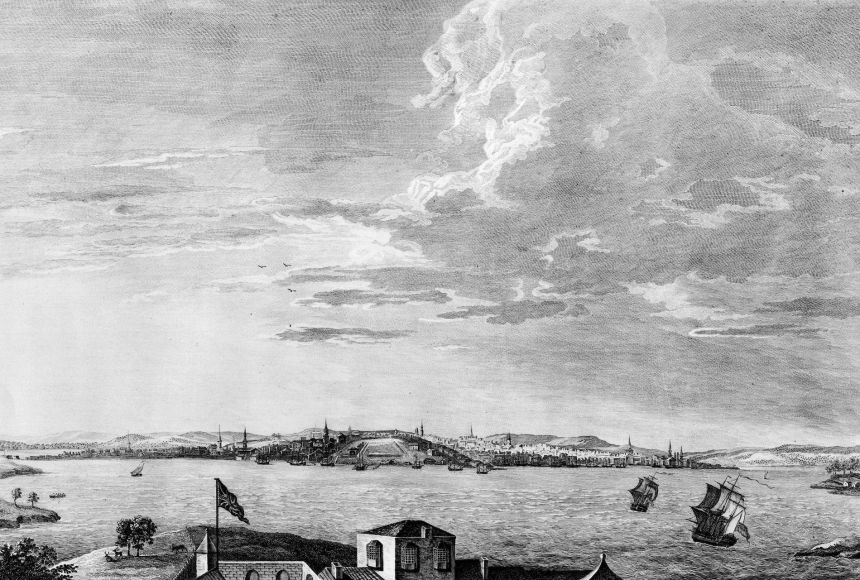Conversations about slavery in the United States frequently center on the South and the Civil War. Yet the roots of slavery in the New World go much deeper than that—back to the original British colonies, including the northernmost in New England. Although New England would later become known for its abolitionist leaders and its role in helping formerly enslaved Southern blacks and those escaping slavery, the colonies had a history of using enslaved and indentured labor to create and build their economies.
The Origins of American Slavery
The concept of slavery was hardly a new one when England’s colonists reached North American shores, as it had been practiced in Europe for more than a century before the colonies. So the arrival of Africans in Virginia in 1619 was not the start of a new phenomenon, but the beginning of human trafficking between Africa and North America based on the social norms of Europe.
While slavery grew exponentially in the South with large-scale plantations and agricultural operations, slavery in New England was different. Most of those enslaved in the North did not live in large communities, as they did in the mid-Atlantic colonies and the South. Those Southern economies depended upon people enslaved at plantations to provide labor and keep the massive tobacco and rice farms running. But without the same rise in plantations in New England, it was more typical to have one or two enslaved people attached to a household, business, or small farm.
In New England, it was common for individual enslaved people to learn specialized skills and crafts due to the area’s more varied economy. Ministers, doctors, tradesmen, and merchants also used enslaved labor to work alongside them and run their households. As in the South, enslaved men were frequently forced into heavy or farm labor. Enslaved women were frequently forced to work as household servants, whereas in the South women often performed agricultural work.
New England’s Forced Laborers: the Enslaved, Indentured Servants, and Native Americans
Part of the reason slavery evolved differently in New England than in the middle and southern colonies was the culture of indentured servitude. As a carryover from English practice, indentured servants were the original standard for forced labor in New England and middle colonies like Pennsylvania and Delaware. These indentured servants were people voluntarily working off debts, usually signing a contract to perform slave-level labor for four to seven years. Historians estimate that more than half of the original population of the American colonies was brought over as indentured servants.
New England colonies were also slower to start accepting African slavery in general—possibly because there were local alternatives to enslaved Africans. Early in New England’s history, a different kind of human trafficking emerged: enslaving and shipping local Native Americans to the West Indies. This kind of slavery was limited compared to the number of enslaved Africans and indentured servants that eventually came to New England, but exporting and enslaving these native people was an undeniable part of early New England human trafficking.
Enslaved Africans quickly replaced indentured servants on plantations in Virginia, Maryland, and other Southern colonies, but in New England, imported enslaved people were initially given the same status as indentured servants. This changed in 1641, when the Massachusetts Bay Colony passed laws for enslaved people differentiating enslaved labor from the indentured servants’ contract labor, which took away the enslaved’s rights.
Still, the New England colonies began to show differences in their approaches to slavery, even as slavery became more common in Massachusetts, Connecticut, and Rhode Island in the 18th century. The colonial government in Rhode Island—which had the largest enslaved population by the 1700s—tried, though ultimately failed, to enforce laws that gave the enslaved the same rights as indentured servants and set enslaved individuals free after 10 years of service. Although human trafficking continued to flourish throughout the 1700s, these first moves to break up human trafficking foreshadowed what was to come in the New England colonies.
Becoming the “Free North”
The use of slavery throughout the colonies (particularly the southern ones) continued to grow throughout the 18th century, but as the colonies moved closer to revolution against England, there was a growing trend of questioning slavery and its practices in New England. The number of people freed from bondage in New England grew, as the enslaved who fought in the Revolutionary War (on both sides) were offered freedom.
Religious societies like the Quakers (who believed that slavery was sinful and amoral) began the first stirrings of anti-slavery movements in New England. These early movements would later form the backbone of the 19th century abolitionist movements that would spread throughout the United States.
New England governments began to step in as well, outlawing active human trafficking in the Connecticut and Rhode Island colonies. However, few colonial leaders wanted a full repeal of slavery at the time. It was not until the last decades of the 18th century that the former New England colonies began the long process of outlawing slavery via emancipation statutes. These were "gradual emancipation" laws, however, designed to phase out the institution over many years. Though the enslaved populations dwindled over time after these laws were passed, enslaved people were still legally held for decades in some northern states. Despite passage of these gradual emancipation laws in 1784, Rhode Island and Connecticut didn't free their last enslaved people until the 1840s.

